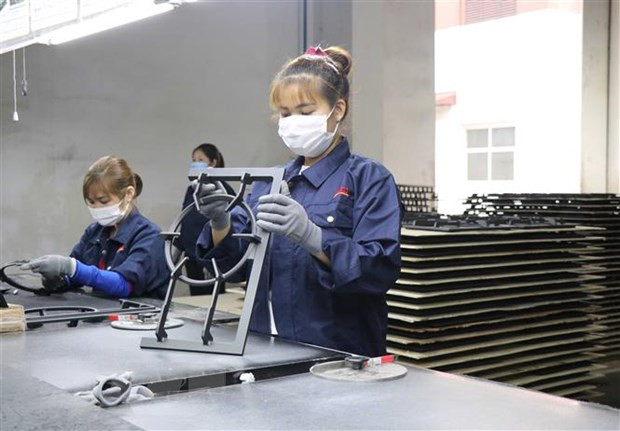 Production at a factory of Vietnam Bright International Co., Ltd. in Bac Ninh's Thuan Thanh II Industrial Park. (Photo: VNA)
Production at a factory of Vietnam Bright International Co., Ltd. in Bac Ninh's Thuan Thanh II Industrial Park. (Photo: VNA)This is the biggest fall in FDI inflows since the COVID-19 pandemic broke out again in the country in late April, wreaking havoc on multiple industrialparks in the northern provinces of Bac Giang and Bac Ninh.
Earlier, FDI inflows declined 2.6 percent year-on-year in the firsthalf of the year, after it edged up 0.8 percent in the January-May period.
According to the MPI’s Foreign Investment Agency, of the7-month figure, 10.13 billion USD came from 1,006 newly-registered projects, up 7percent year-on-year.
Some 4.54 billion USD was added to 561 existing projects,representing a year-on-year decrease of 3.7 percent. Capital contribution andshare purchases by foreign investors dropped by 55.8 percent to 2.05billion USD.
Economists believed that the COVID-19 pandemic is takingtoll on Vietnam’s FDI attraction. The fourth coronavirus wave has knocked theconfidence of European businesses, with the EuroCham Business ClimateIndex (BCI) falling almost 30 points to 45.8 in the second quarter of this year.
Despite the contraction, the FDI disbursement slightly rose by 3.8 percent from a year earlier to 10.5 billion USD.
The largest proportion of the seven-month FDI, 7.9 billion USD or 47.2 percent, landedin processing and manufacturing, followed by electricity production anddistribution, with 5.49 billion USD or 32.8 percent.
Singapore topped foreign investors, pouring 5.92 billion USDinto Vietnam, followed by Japan (2.54 billion USD), and the Republic of Korea(2.2 billion USD).
The Mekong Delta province of Long An was the largest recipientof FDI with 3.58 billion USD, followed by Ho Chi Minh City (1.78 billion USD) and BinhDuong (1.33 billion USD)./.





























